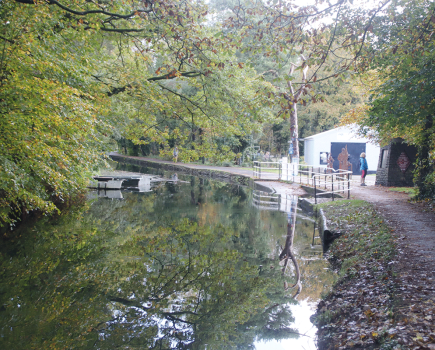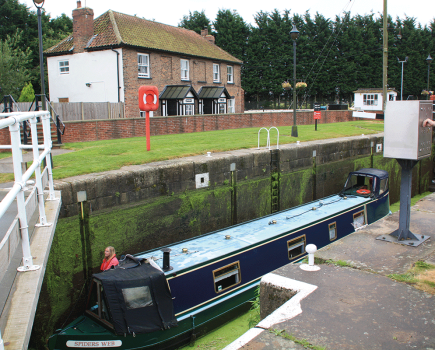All About Locks
LOCKS OF FUN…
Navigating locks is great fun – which is a good thing because there are plenty of them and they are a feature of almost every navigable river or canal.
The principle behind a lock is simple. The boat enters the chamber; the gates are closed behind it; water is let in to raise the boat, or out to lower it; and the gates are opened for the boat to leave. You can see an animation of a lock in operation by clicking the picture link below.
The water is let in or out via ‘paddles’ – doors in the chamber walls and gates which are opened by turning a mechanism of cogs and wheels with your windlass. Some waterways have ‘guillotine’ locks worked either manually by handle or electrically, and on some larger rivers such as the Thames and at various canal locations, the locks are operated for you by full-time lock keepers.Strong currents are produced as you empty or fill a lock, so to be safe, you should open the ‘ground paddles’ in the chamber first. Where gate paddles are fitted, open them slowly when the lock is half full to avoid torrents of water rushing into the lock. Don’t tie the boat’s ropes around the bollards on the lockside or you could end up with your boat left hanging… simply hook the ropes around the bollards so you can hold it still in the chamber (this is especially important in locks that are wider than the boat) and let out or take in the rope as necessary as the boat rises or falls.Staircase locks are a feature of many canals. Here the top gates of one lock are the bottom locks of the next and once you start the sequence you have to keep going up or down. Staircase locks require careful thinking and so that you operate the paddles in the right order, instruction boards are usually provided.As a general rule you should share a lock with other boats where possible, saving water and time. Wait a few minutes for a boat behind you to catch up, so that you can share. Likewise if the lock is set against you check if there is a boat coming in the other direction before emptying or filling to suit yourself. When planning your cruise, expect each lock transit to take around 20 minutes. Couple this to an average 3mph cruising speed and you can calculate the time taken to cover a given distance by simply adding the locks and miles together, then dividing by three to get the number of hours. Simple!







